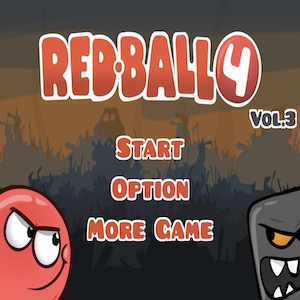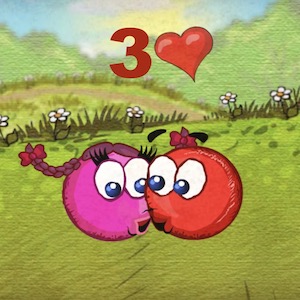Red Ball
The Red Ball series is a remarkable testament to the enduring power of simplicity and accessibility in the realm of video games. These physics-based platform games have captivated audiences worldwide with their vibrant aesthetics, clever level design, and charming protagonist, a simple red ball. This article delves into the allure of the Red Ball series, unraveling the elements that have cemented its place in the annals of gaming history.
Developed by Evgeniy Fedoseev and first released in 2008, the Red Ball series began as a humble flash game on the Internet. It instantly resonated with players due to its straightforward mechanics and easy-to-understand controls. You are a red ball, and your mission is to navigate through a variety of obstacles to reach the level’s end. As the game evolved over the years with new installments, this core concept remained consistent, while additional complexities were introduced, such as enemies, puzzles, and more challenging landscapes to traverse.
One element that makes the Red Ball series so beloved is its accessibility. With the controls typically involving only movement and jumping, even those new to gaming can quickly grasp the gameplay mechanics. This ease of entry is a critical part of the game’s appeal, welcoming players of all ages and skill levels.
However, don’t let the game’s simplistic design fool you. The Red Ball series is celebrated for its ingenious level design. As players progress, they encounter a slew of cleverly placed obstacles and thought-provoking puzzles. Each level demands a unique approach, sometimes requiring precise timing, while at other times, problem-solving skills come to the forefront. This continuous cycle of challenge and reward makes the Red Ball games irresistible and highly replayable.
The series also thrives on its subtle storytelling. The Red Ball character is wordless and faceless, but players instantly feel a connection. It’s a testament to the game’s design that such a simple character can evoke such empathy. Players often find themselves rooting for the plucky little protagonist, urging it to overcome each obstacle and reach its goal.
The Red Ball series also employs a vibrant visual aesthetic that further adds to its charm. The contrast of the bright red ball against the various colorful backdrops creates a visually engaging landscape that’s pleasing to the eye. This striking use of color is not merely cosmetic, though. It helps differentiate between safe and hazardous environments, contributing to the gameplay experience.
Sound design in the Red Ball games deserves mention as well. The bouncy sound effects and cheerful background music perfectly complement the game’s overall vibe. These auditory elements create an atmosphere of fun and light-hearted adventure, enhancing the player’s engagement.
The Red Ball series’ evolution over time is a testament to its developers’ ability to adapt and improve. Each sequel in the series brought innovative ideas, more challenging levels, and occasionally new characters. Red Ball 4, for example, introduced a villainous antagonist, the Black Square, making the narrative more engaging. This evolution while maintaining the game’s core identity is a key factor behind its continued success.
As of 2023, the series has extended its reach beyond the confines of the browser, being made available on several platforms like iOS, Android, and Nintendo Switch. This expansion has allowed a new generation of gamers to experience the Red Ball’s adventures, ensuring the series’ longevity.
In conclusion, the Red Ball series is a shining example of successful game design, reminding us that a game doesn’t need to be intricate to be engaging. Its enduring popularity lies in its easy accessibility, creative level design, appealing visuals, and the lovable simplicity of its protagonist. As gaming becomes increasingly complex, the Red Ball series stands as a charming, timeless bastion of accessible, engaging gameplay. Its legacy continues to roll on.



